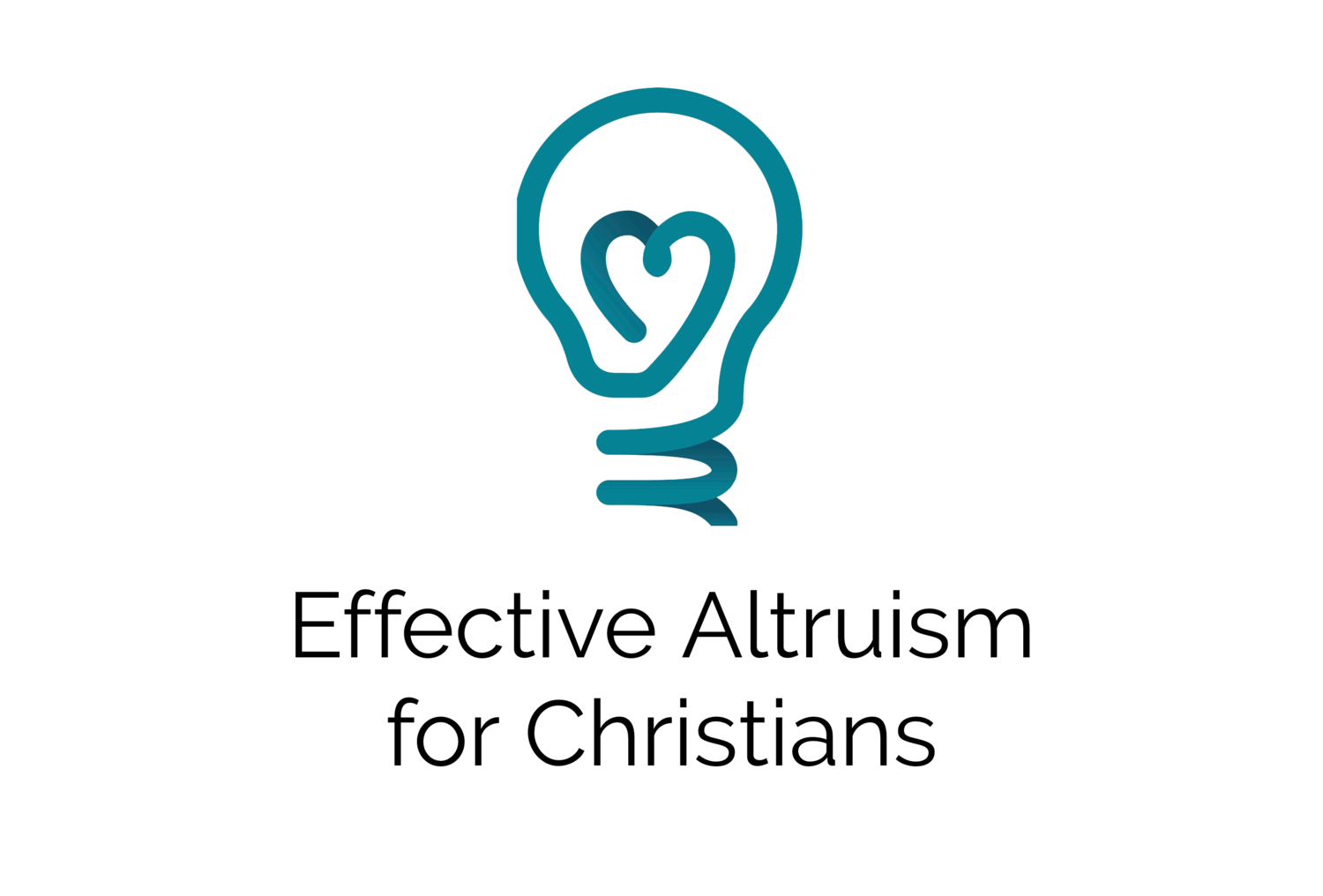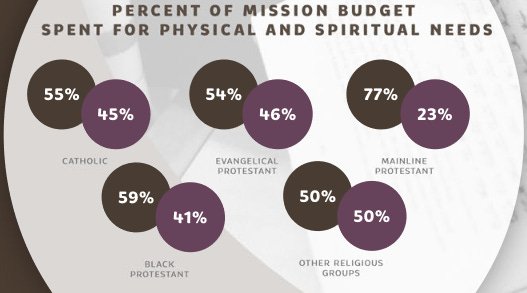Should you try to make the charity spending of your church more effective? (Part 1)
By Vesa Hautala | Estimated reading time: 8 minutes
This post examines whether Christians should try to make the charity spending of their churches more effective by influencing it in a more evidence-based and impact-oriented direction. I also present incentives against making charity more effective that many churches may be facing. In a future post, I hope to discuss the role of helping locally vs helping globally and some other objections towards more Effective Altruism style charity in churches. I’m taking a rather US-centric perspective here because the US likely has the largest religious economy in the world—things can be very different for churches in other parts of the world.
Defining charity
For this post, I’m defining charity as activities that have relieving or preventing bodily, psychological, or social harm as their primary proximate goal—”proximate” because one could argue that charity activities will ultimately produce spiritual benefits, and “primary” because activities often have many goals. By this definition, charity activities are different from community and faith building, administrative, and evangelistic activities.
This definition has its problems. In practice, there is often a lot of overlap between charity and other activities. For example, a church youth outreach could both prevent social harm to at-risk youth and include evangelistic and faith building components. The distinction between activities aimed at spiritual benefits and “earthly” help is also blurry: charity is a testimony of Christian faith and builds up the individual Christians and communities who engage in it. Still, I think this definition gestures towards a distinction that can be grasped intuitively. Charity would include things like soup kitchens, homeless shelters, and catastrophe aid, but not church services, spreading Bibles or Gospel tracts, or paying the salaries of pastors and missionaries.
I will focus on influencing charity spending rather than charity programs because it seems a more promising way of increasing impact.
Three ways to think about effectiveness in church charity
Let’s first ask the fundamental question: should churches pursue their charity programs in an evidence-based and impact-oriented way? I see a loose continuum of possible stances:
There are no good (enough) reasons for churches to do charity work in an evidence-based and impact-oriented way
There are (at least some) good reasons to do so
Churches must do so because they have an obligation to do as much good as they can, considered impartially
Stance 1 seems hard to defend because charity is a goal-oriented activity. Being able to achieve this goal more effectively, i.e., helping more people with the same resources, seems self-evidently good—though see below for some discussion about the practical goals of church charity.
Stance 3 implemented in practice would mean “EA churches” that relentlessly optimise their activities and spending using impartial cost-effectiveness metrics. If all this optimisation were directed towards charity as defined in this post, they would not look much like traditional churches.
Stance 2 seems like a commonsense middle ground. It recognises that it is good to achieve more with the resources spent but doesn’t require the sole focus of a church to be maximising its global impact. If stance 2 is accepted, it is reasonable to try to make the charity spending of churches more effective. Few people would object to this view in principle, but what implementing it in practice looks like depends on how important optimising charity is compared to other goals.
Christians who are interested in effective altruism seem uniquely positioned to influence the charity spending of their churches. For some of them, this might be a significant impact opportunity, though I will discuss reasons for pessimism below. Christian EAs may also have personal motivation to influence the giving of their church communities in a similar way they might care particularly about the way their own family spends money.
There is often room for improvement
My impression, supported by some anecdotal evidence, is that there is a lot of room for improvement from a cost-effectiveness perspective. Some reasons for this include:
Churches seem to be under relatively little pressure to make their charity activities cost-effective, both internally and externally
Explicit cost-effectiveness considerations rarely seem to be a part of how churches think about their charity spending.
In Christian development charities practices are often not great from an effectiveness perspective. There is an upcoming article about this in the CRDA Journal (Christians Relief, Development and Advocacy: The Journal of the Accord Network)
Generally, most charities are not especially impactful, at least if you consider impact impartially
In terms of the raw numbers of people helped and the magnitude of harm prevented, churches in rich countries could make their charity more impactful by increasing their donations to work done in the Global South. Churches in the US often focus on local programs, but the common thinking in Effective Altruism is that for people in rich countries, donations overseas are likely to be more cost-effective. The charities with the most robust evidence for their cost-effectiveness operate in developing countries in the Global South. To what extent churches should shift their donations to the Global South when it trades off against helping locally is an ethical and theological question that I don’t have the capacity to discuss here, but which I hope to examine in a future post.
Churches move a lot of money
The direct spending of US churches on their operations is $84 billion per year. It was hard to find data on what percentage churches spend on charity. Based on Lake Institutes National Study of Congregations’ Economic Practices, I calculated that between 2–8% of the budgets of different denominations go to charity-type activities in foreign missions. Spending on non-mission-related charities abroad is likely way smaller. (See the appendix for more details.) In any case, it seems that vastly more money is being used on local charities as opposed to helping overseas. According to the same report, “the greatest percentage of congregations’ mission, service, and benevolence resources go towards meeting local needs (61%)”, and this is also anecdotally obvious.
Churches face incentives against impartial charity spending
What purposes does charity serve in practice?
Causing drastic changes to church charity spending might be difficult. Making charities more cost-effective seems obviously good, but only if we assume the goal of charitable activities of churches is to alleviate physical, mental, or social harms cost-effectively. Making charity more effective might trade off against other things.
There are extremely wealthy churches with 7+ figure endowments, but the median church in the US is more likely focused on just keeping the lights on. A financially tight church is trying to get enough money to ensure they can keep paying the salaries of their personnel and the expenses of their buildings. Even in the US, church membership is declining, which means churches may be struggling to maintain buildings and programs inherited from livelier times with shrinking budgets. Asking them to donate more to charity (especially charity overseas) would trade off against immediate community survival goals. One could ask if churches need to keep the buildings etc., but I’m limiting myself to the descriptive now.
Churches in situations like this are incentivised to have their charity programs support the local church community. This is a different thing to optimise for than cost-effectively helping the recipients of the charity. It pushes towards achieving visible local results and running activities that get engagement from church members and boost morale. For a concrete comparison: if a US church sent money to people in extreme poverty via GiveDirectly instead of running a local soup kitchen, that wouldn’t create local volunteering opportunities or bring anyone to that church’s services or other activities.
A view where charity by churches exists only to enable volunteering and other community-building goals seems backwards. But because of the incentives outlined above, there is a real chance that building the church community becomes the core function of charity efforts in practice.
There are also other, more principles and theological reasons that make churches prioritise local charity. I hope to discuss these in a future post.
The costs of moving to impact-oriented charity
There are also other obstacles to switching to more impact-driven giving. Doing impact comparison takes effort and probably isn’t very interesting to the average churchgoer, because it might mean things like looking at spreadsheets, reading charity evaluation reports, and debating details of studies. This does not create the same kind of excitement as local programs. In addition, attempts to switch from the status quo to a more impact-driven direction could create serious disagreement in the community.
There would also be real costs to people benefitting from programs that would receive less funding. Kids might go hungry, lonely people remain isolated, etc. Granted, the lives of children somewhere else would be saved, but it is still not an easy trade to make. This is true whether the switch would be from local to international charity or between different local programs. Opportunity cost is always there—someone is always suffering as long as absolutely everyone cannot be helped. It’s just easier to grasp the consequences when those who are not helped are close. The consequences of not helping recipients further away are less visible. Answering the question of helping locally vs helping overseas (for churches that have the means) requires thinking carefully about these kinds of trade-offs and the balance of responsibility the church has for those near and those far away. But whatever the case, decisions about charity spending should not be based on just not considering those far away at all or reflexively prioritising what is familiar.
Appendix: How much do churches spend on charity?
It was not easy to find numbers on how much exactly churches spend on “charity”. According to one source, US churches spent on average “49% on personnel, 23% on facilities, 11% on missions, 10% on programs, 6% on dues”. Local charitable spending is likely split into all of these. For example, a church running a soup kitchen could incur costs in facilities, personnel, and programs.
According to a 2013 study by ECCU (“an alliance of Christian churches, parachurch ministries, schools, workers, and individuals” that “provide[s] a wide range of ministry-centric financial services and resources”), the members of ECCUs Ministry Advisory Panel spent on average 1% of their budget on “local/national benevolence” and 2% of their budget on “international benevolence”. I don’t know how representative this is of US churches in general.
Missions also often contain charity-type activities. According to the Lake Institute’s National Study of Congregations’ Economic Practices report, different denominations spend between 4% and 14% of their budget on missions, of which 23%–50% goes to relieving physical needs as opposed to spiritual needs.
Pictures from the NCSEP report; the darker circle represents spending on physical needs and the lighter one on spiritual needs.
Calculating based on these, Catholics spend about 2% of their total budget for physical needs in missions, Evangelicals about 8%, Mainline protestants about 5%, and Black Protestants about 8%.
These sources demonstrate that the charitable spending of churches is not just a single number in the annual budget sheet but is composed of various elements. The percentages are not huge, but given the large total volume, we are still talking about billions of dollars annually.




